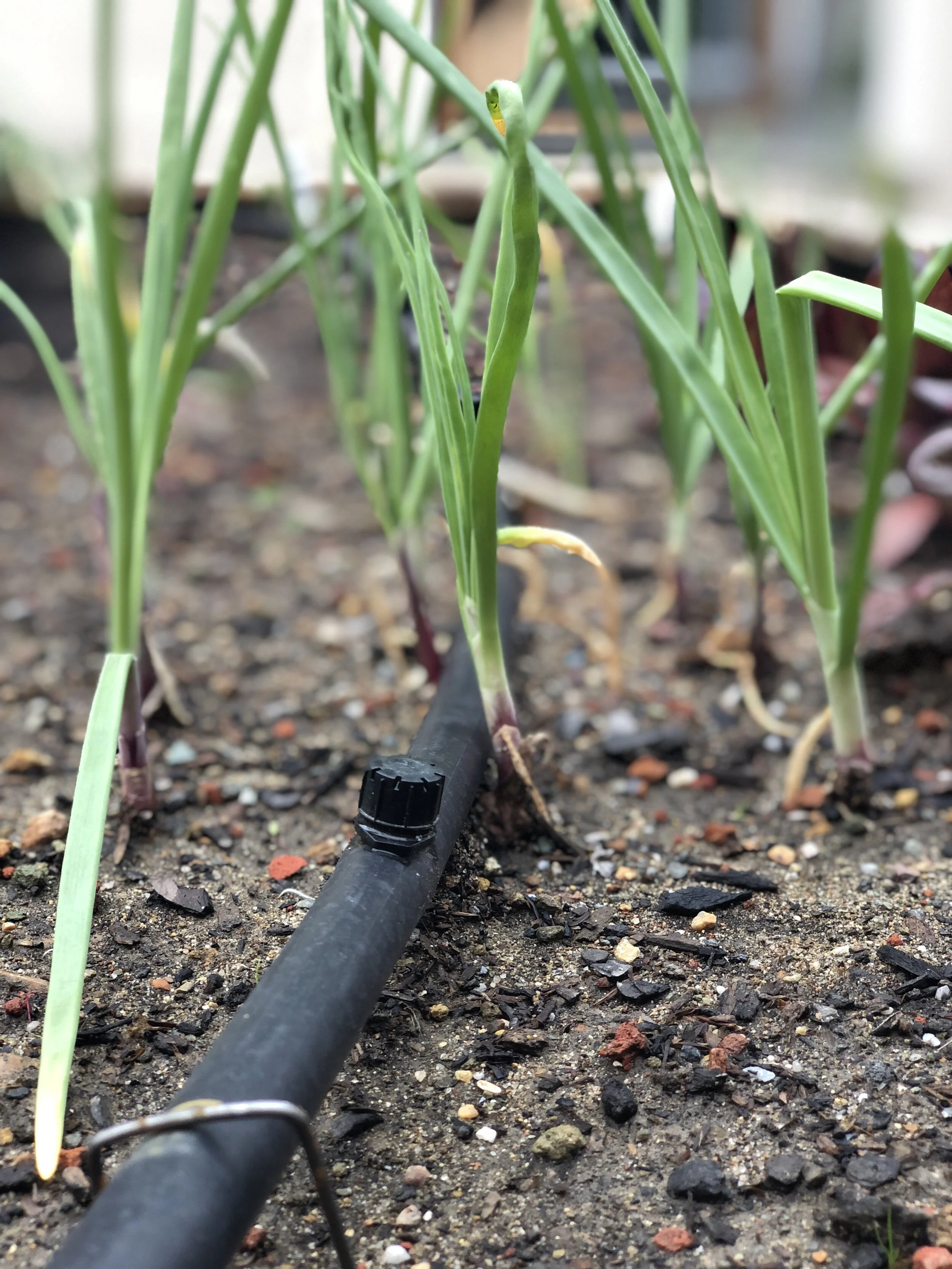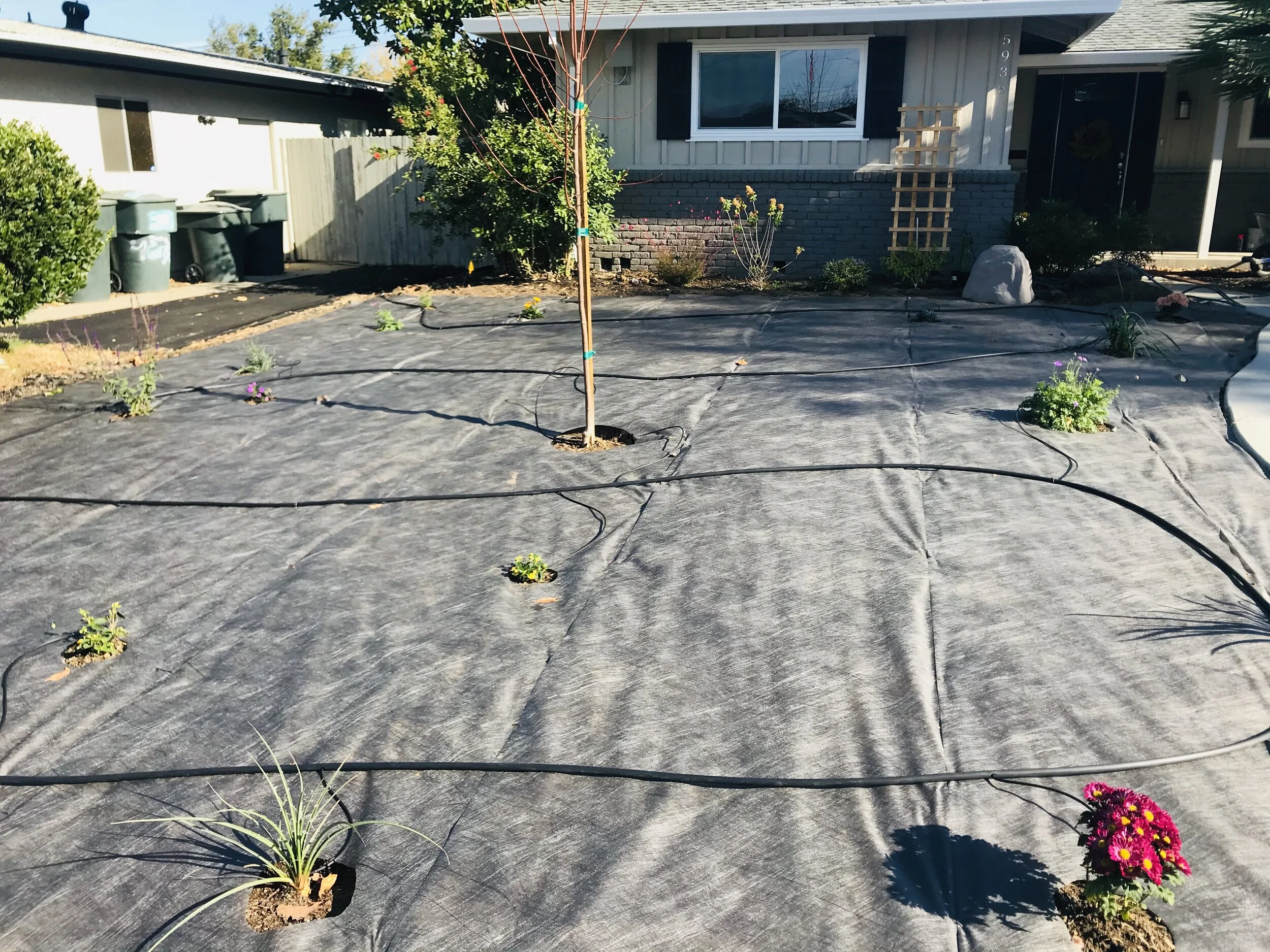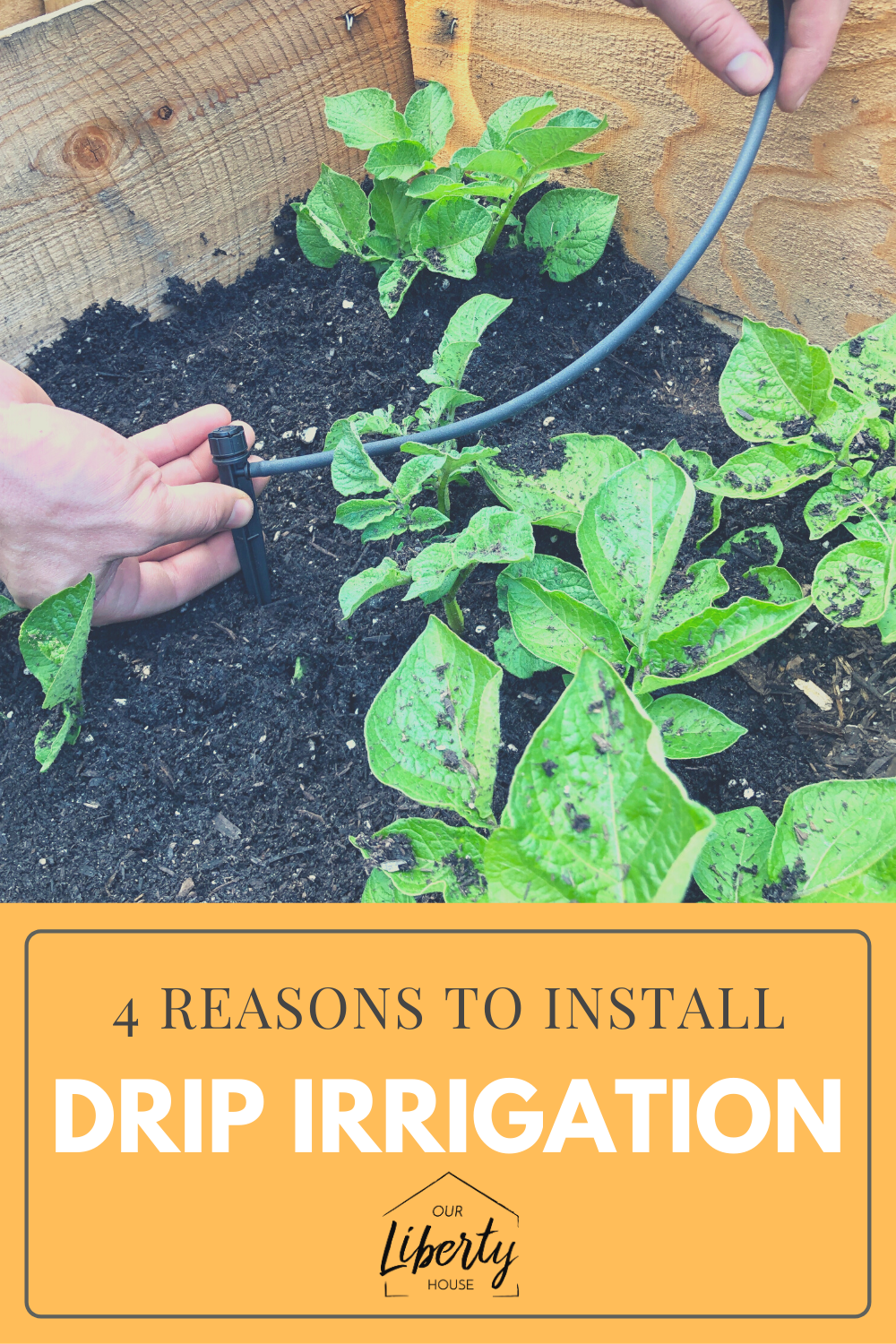4 Reasons to Install Drip Irrigation
This post does contain affiliate links. By clicking the link and making a purchase we receive a small commission at no additional cost to you! This helps us keep the lights on and continue to bring you great content.
If you are in the process of building a new garden or simply looking to fine tune an established one, drip irrigation should definitely be on your radar. Drip irrigation for beginner vegetable gardeners will not only save you money but help your plants grow healthier and stronger.
Water is becoming a more and more precious commodity, especially here in California with the increasing population and continued drought conditions. By installing a drip system you not only save money, but also have happier healthier plants and more time to spend enjoying your yard rather than tending to it. This is not a how to guide but intended to inspire you all to look into the possibility of a smarter irrigation system around your house.
Drip Irrigation Line running through our Garden Bed
1 - Save Water! (And Money)
An everyday garden hose uses 15-20 gallons per minute. An average lawn sprinkler attached to a hose can use as much as 12,000 gallons a month. I don’t know about you but standing with a hose spraying water at plants is never the most enjoyable endeavor, not to mention how much of that spray actually gets where you want it. By installing a drip system you can regulate how much water each plant is getting and for how long. When we ripped out our front lawn and replaced with xeriscape landscaping we reduced our water inputs to about 1200 gallons per month in the same space! That’s a 90% reduction!
2 - Your Plants Will Love It!
Consistent, long, and deep watering promotes happy and healthy plants. Come on, admit it, we are all pretty lazy when it comes to watering. We drag the hose around the yard spraying back an forth until the soil appears saturated. This process is extremely inefficient and to be honest your plants don’t really appreciate it. When watering plants you want to saturate AT LEAST the top 8” of soil. This slow and deep watering promotes deeper root growth which in turn reduces their water requirements during the summer months.
Drip Irrigation Lines in our Front Yard
3 - Prevent Disease and Increase Yields!
In addition, spraying your plants with the hose can promote disease. A lot of species of plants don’t like wet leaves because it leads to powdery mildew or various other disease conditions. Not convinced yet? Have you ever spent an entire season babying a tomato plant just to have all the fruits crack? Frustrating huh… its easily solved by consistent deep watering from an irrigation system.
B-Hyve App that allows you to control your watering from your smart phone
4 - Saves Time!
In this day and age everything is automated! This is one of those scenarios that we feel really wins from automation. You can buy an irrigation controller (we like this one) that you can control from your phone and design the ideal irrigation plan for your space. My phone even alerts me when the watering is done! Sitting at work wondering if my plants are happy and thinking about me too. You will eliminate the time spent walking around your garden battling with a hose and actually spend more time enjoying the garden rather than accomplishing a chore.
We hope this enlightened you to the benefits or drip irrigation systems. We will be putting out an more all inclusive how to guide for all the DIY’ers out there soon so be sure to subscribe to the blog and follow us on Instagram and Facebook.
Happy Earth Week,
L&B
If you enjoyed this post, you may also enjoy these articles:
How to Build a Steel Raised Garden Bed





